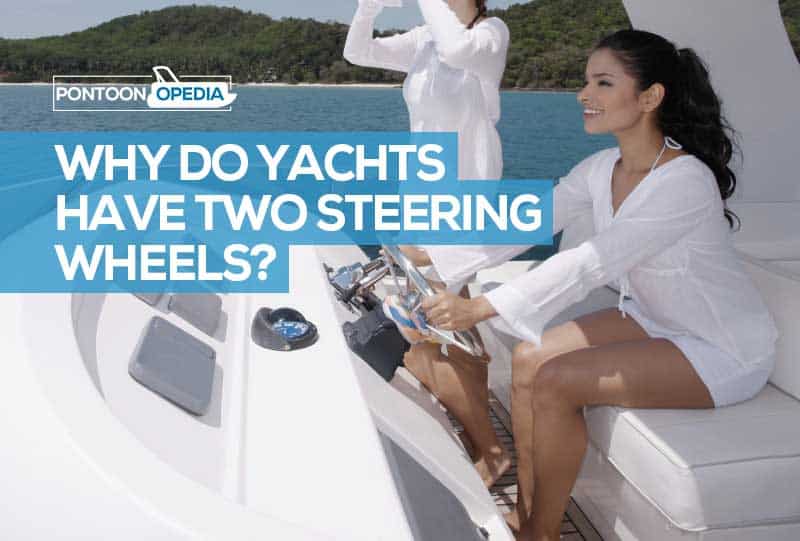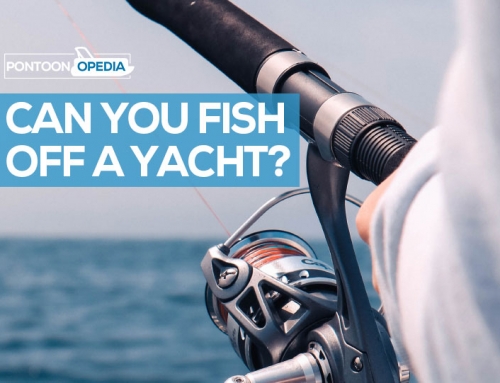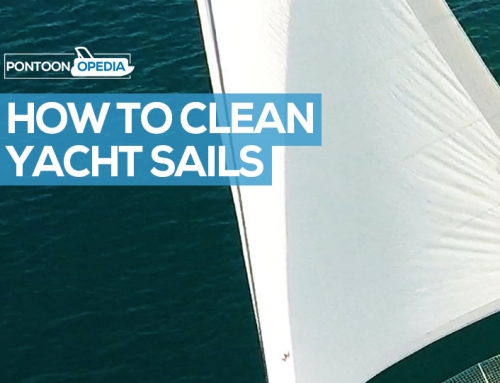Yachts come in many different shapes and sizes, varying in terms of number of sails (if they have a sail at all), how exposed the deck is and what type of controls they have – and this can sometimes include a yacht with two steering wheels.
When looking at different types of yachts, you may have seen many advertised as having dual steering wheels, with two smaller wheels set to both the port and starboard side of the boat.
This can look very complicated and may put people off them, assuming that you need more than one driver. But why exactly do some yachts have two steering wheels rather than one? And is there any benefit to it?
Let me explain why some yachts have two steering wheels and what it means for you…
Table of Contents
Why do yachts have two steering wheels?
There are a few different reasons for why some people prefer to have two steering wheels rather than one, ranging from overall appearance to actual practical use.
But why do so many yachts have a dual steering system?
If you are concerned that two wheels will mean that you need to people at the helm, then don’t worry. These wheels aren’t meant to be used at the same time, it simply gives the helmsman the option of what side of the ship they wish to sit at and control from.

I can guarantee that most of the super yachts here will have two steering wheels.
Switching from driving from the port or starboard side of the ship can help them in terms of visibility, course correction and even the speed of the turn.
For boats with a single steering wheel, the helm is located in the middle of the boat’s deck, which, for larger ships, can limit the amount of visibility when turning, being unable see over either side of the hull of the ship.
For yachts with sails, it can also make it hard to see either side of the jib sail so you can see the shape of the sail and if it needs to be adjusted to pick up the right amount of wind.
Racing yachts built for higher speed excursions rather than cruising use two wheels for weight control, the helmsman going between the port and starboard wheels of the ship in order to use his weight to control and speed up the turning of the ship.
As racing boats have developed overtime thanks to improved technology, they have become wider while remaining easy and quick to steer, meaning that dual steering is also needed to maximise the visibility over either side of the ship and to fully see the sails’ reaction to the wind.
For larger ships, a single wheel will often be extremely big in order to fully control the ship; with a dual system this splits the control into a better and less complicated handling system.
Similarly, some boats have two separate rudders, with one rudder often rising above the water when turning; so, another steering wheel is needed to control the rudder still in the water.
Many helmsmen prefer to sit either on the outside or the gunwale side of the ship, either because of the wind direction, what hand they prefer to steer with or what side of the jib sail they want to see.
Handy Hint: Did you know that a ship’s steering wheel has a specific name that it is most commonly called. Click here to find out what the proper name is.
Another, more simple explanation for many cruising yachts is because of fashion and design. While racing yachts often need a dual steering system, boat designers have recognised that it is a good look to have regardless of practicality.
Because of this, boats that often would be easily controlled with a single steering wheel are fitted with two because it gives the vessel the appearance of a racing ship.
This is no different to many cars borrowing features off of fast racing cars, despite not actually needing them.
What does a ship’s wheel do?
It is pretty common knowledge that a steering wheel does what it says on the tin: it steers the boat. However, how it does this is important for anyone interested in sailing.
A single steering wheel on a yacht is usually sat in the middle of the deck, towards the stern of the boat (although some yachts have their helms towards the bow). As the wheel is turned either clockwise or anticlockwise, it controls a hydraulic pully mechanism throughout the body of the boat, where tiller ropes pull the rudder to either port or starboard to control to course of the boat.
Nowadays, boats are usually steered using a mixture of electrical servomechanisms that help the helmsman to steer the ship without too much effort on their part. Some rudders are even controlled through a remote-control system from the helm.
Handy Hint: Do you know what the proper name for the wheel on a pirate’s ship is? Find out what it’s called and the reasons why in this fact file.
Do I need two steering wheels for my yacht?
If you are torn between a yacht with a single wheel and a yacht with a dual wheel control, it is entirely down to what you personally want to use your boat for.
Yachts can be used for both more active excursions, such as racing or travelling, or for recreation and more relaxing outings on the open water.
If you are looking for a boat build for speed and quick manoeuvrability, such as for racing or for longer excursions, then a dual system with two steering wheels will help give you more control over the vessel.
Additionally, if you are looking for a larger ship with a larger stern, having two steering wheels is also preferable as it improves the amount of control that you have over both sides of the ship.
For instance, some boats have two separate rudders that makes a dual wheel system necessary, while others have a single rudder and the side of the controls are down to personal preference.
If you are looking for a cruising yacht for short excursions, a single steering wheel is fine, especially If you or your helmsman aren’t going to be spending a lot of time at the controls. Just make sure you also have a chartplotter for your yacht too!
Additionally, this also applies to boats under 40 feet, as a single wheel is perfectly capable of controlling a smaller vessel without a lot of lost visibility.
That being said, many yachts have two steering wheels more for the appearance of the vessel than any actual improvements in handling. It may well be that you do not require two wheels, but your yacht will have one regardless.
In this case, there isn’t any harm done and it won’t harm or really hinder the control of your boat.
The last word…
The handling of a yacht also varies in terms of what you are using it for, the size of the crew and the amount of control you want to have.
And that’s where it can often be important for a yacht to have two steering wheels.






